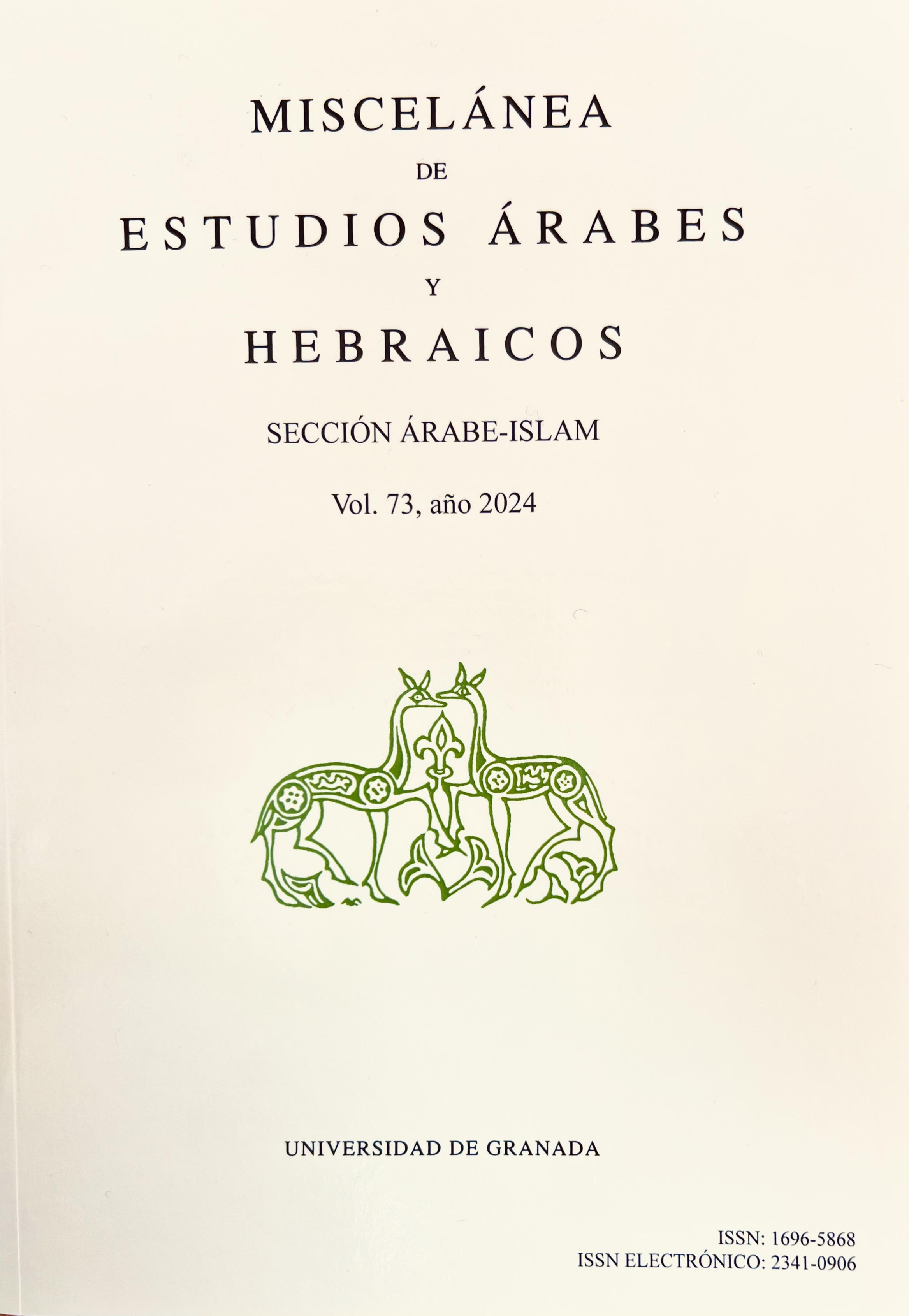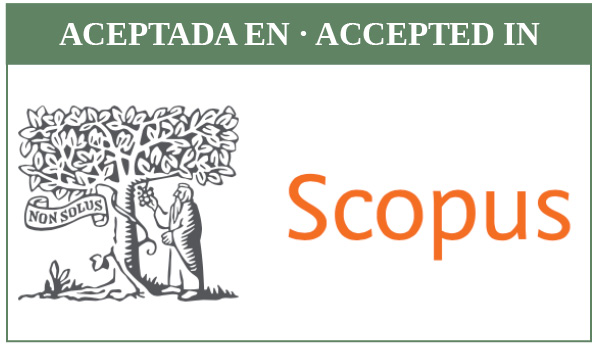“A New Age for the Living Dead”: Palestinian Nation-Building Through Theater
“Una nueva era para los muertos vivientes”: La construcción de una nación Palestina a través del teatro
DOI:
https://doi.org/10.30827/meaharabe.v73.26033Palabras clave:
Teatro palestino. François Abū Sālim. Al-Ḥakawātī. Nakba. Construcción de la naciónResumen
El artículo es un intento de rastrear el surgimiento y desarrollo del teatro palestino, a la sombra del conflicto árabe-israelí y en el contexto de la Nakba y la construcción de la nación palestina. La discusión se refiere a los primeros intentos dramáticos y teatrales durante la primera mitad del siglo XX, el desarraigo y la decadencia después de la guerra de 1948, la represión de las actividades culturales palestinas durante la década de 1950, y el nuevo comienzo y crecimiento del teatro profesional después de la guerra. 1967, especialmente la compañía al-Ḥakawātī. El fundador de esta compañía de teatro es François Abū Sālim (Abu Salem) (1951-2011), hijo de un poeta francés nacido en Hungría y de un pintor y escultor francés que se integró a la identidad y cultura palestina. La profesionalización del teatro palestino en general ha ido tomando una línea paralela a la escalada de resistencia y ha estado a la altura de los desafíos históricos, desafiando las penurias impuestas por la censura, el aislamiento geográfico y la falta de educación.
Descargas
Citas
ABŪ SĀLIM, “Exclusion – Insertion en Palestine” (I thank Katharina Lack, who received the essay in person from Abū Sālim in 2006).
AGASSI (AGHĀSĪ), Eliyahu (ed.). Fī mahrajān al-adab. Tel Aviv: Maṭba‘at Davar, 1959.
‘ALYĀN. “Al-Masraḥ al-Filasṭīnī, al-masār wa-l-intifāḍa”. Balsam, April 1992, pp. 84–87.
AND, Metin. A History of Theatre and Popular Entertainment in Turkey. Ankara: Forum Yayinlari, 1963-1964.
ASHRAWI, Hanan Mikhail. Contemporary Palestinian Literature Under Occu- pation. Birzeit: Birzeit University Publications, 1976.
AL-BARGHŪTHĪ, ‘Abd al-Laṭīf. Al-Aghānī l-sha‘biyya fī Filasṭīn wa-l-Urdun. Jerusalem: Maṭba‘at al-Sharq al-‘Arabiyya, 1979.
BEN ZE’EV, Na’ama. “‘I Came Naïve from the Village’: on Palestinian Urbanism and Ruralism in Haifa under the British Mandate”. British Journal of Middle Eastern, 47, 2 (2020), pp. 264-281.
BSĪSŪ, Mu‘īn. Al-A‘māl al-masraḥiyya. Acre: Dār al-Aswār, 1988.
DARWĪSH, Maḥmūd. “Anqidhūnā min Hādhā l-Ḥubb al-Qāsī”. Al-Jadīd, (June 1969), pp. 2-4.
EVEN-SOHAR, Itamar. ‘Laws of Cultural Interference’. In Papers in Culture Research. Tel Aviv: Tel Aviv University, 2005, pp. 52-69.
GHASSĀN, ‘Abd Allāh. Al-Masraḥ al-filasṭinī bayna al-tajriba wa-l-aṣāla. Jeru- salem: n.pub., 1979.
ḤABĪBĪ, Imīl. Al-Waqā’i‘ al-gharība fī Ikhtifā’ Sa‘īd Abī l-Naḥs al-Mutashā’il. Haifa: Dār al-Ittiḥād, 1974.
—. Luqa‘ ibn Luqa‘ [Imīl Ḥabībī, Luka‘ ibn Luka‘. Nazareth: Manshūrāt Dār 30 Ādhār, 1980.
—. The Secret Life of Saeed, the Ill-Fated Pessoptimist. Trans. Trevor Le Gas- sick.. New York: Vintage Press, 1982.
—. Sudāsiyyat al-Ayyām al-Sitta; al-waqā’i‘ al-gharība fī Ikhtifā’ Sa‘īd Abī l- Naḥs al-Mutashā’il wa-qiṣas ukhrā. Haifa: Dār al-Ittiḥād, 1985.
ḤADDĀD, Mīshīl Iskandar and QA‘WĀR, Jamāl. Ẓalām wa-Nūr. Nazareth: Ma- ktabat al-Jalīl, 1954.
HOBSBAWM, Eric and RANGER, Terence (eds.). The Invention of Tradition. Cambridge: Cambridge University Press, 1992 [1983].
HUGO, Victor-Marie. The Hunchback of Notre Dame. Reading, PA: Spencer, 1937.
—. Notre-Dam de Paris. Paris: Librairrie Greund, 1956 [1831].
—. Aḥdab Notre Dame. Trans. Ramaḍān Lāwand. Beirut: Dār al-‘Ilm li-l- Malāyīn, 1989.
ḤUSAYN, Kamāl al- Dīn. Al-Turāth al-sha‘bī fī l-masraḥ al-miṣrī. Cairo: al-Dār al-Miṣriyya al-Lubnāniyya.
IBN AL-NADĪM. The Fihrist. Ed. and Trans. Bayard Dodge. New York & Lon- don: Columbia University Press, 1970.
—. Al-Fihrist. Al-Dawḥa: Dār Qaṭrī ibn al-Fujā’a, 1985.
IBN QUTAYBA, ‘Abd Allāh ibn Muslim. ‘Uyūn al-Akhbār. Cairo: Maṭba‘at Dār al-Kutub al-Miṣriyya, 1928.
AL-JAWZĪ, Naṣrī. Ta’rīkh al-masraḥ al-filasṭīnī 1918-1948. Nicosia: Sharq Press, 1990.
JOHANSSON, Ola and WALLIN, Johanna (eds.). The Freedom Theatre Perfor- ming Cultural Resistance in Palestine. New Delhi: LeftWord Books, 2018.
KELLNER, Douglas. “Popular Culture and the Construction of Postmodern Iden- tities”. In Scott LASH and Jonathan FRIEDMAN (eds.). Modernity and Iden- tity. Oxford & Cambridge, MA: Blackwell, 1991, pp. 141-177.
LANDAU, J. M. Studies in the Arab Theatre and Cinema. Philadelphia: Univer- sity of Pennsylvania Press, 1958.
LANE, Edward William. Manners and Customs of the Modern Egyptians. Lon- don: Dent and New York: Dutton, 1954 [1908].
MACDONALD, Margaret Read (ed.). Traditional Storytelling Today. London and Chicago: Fitzroy Dearborn, 1999.
MOREH, Shmuel. Bibliography of Arabic Books and Periodicals Published in Israel 1948-1972. Jerusalem: The Hebrew University, 1974.
NAKHLE-CERRUTI, Najla. La Palestine sur scène: Une aproche géocritique du théâtre palestinien (2006-2016). Ph.D. thesis, Sorbonne Paris Cité University, 2019.
NEVO, Eshkol. Hareʼyon Ha-Aḥaron. Tel Aviv: Kinneret Zmora-Bitan, Dvir Books, 2018.
OUYANG, Wen-chin. Literary criticism in Medieval Arabic-Islamic culture: The making of a tradition. Edinburgh: Edinburgh University Press, 1997.
PELED, Mattityahu. “Annals of Doom”. Arabica, XXIX, 2 (1982), pp. 141-183 SAYEGH, Anis (ed.). Encyclopaedia Palaestina. vol. IV: Studies in Civilization. Damascus & Beirut: Encyclopaedia Palaestina Corporation, 1990.
AL-SAWĀFĪRĪ, Kāmil. Al-Adab al-‘arabī l-mu‘āṣir fī Filasṭīn min sanat 1860- 1960. Cairo: Dār al-Ma‘ārif, 1979.
—. “Al-Bidāyāt al-ūlā li-l-masraḥ al-muqāwim fī l-arḍ al-muḥtalla”. Al-Aqlām, (March 1980), pp. 131-138.
SEBEOK, Thomas A. (ed.). Encyclopedic Dictionary of Semiotics. Berlin: Mou- ton de Gruyter, 1986.
SHIḤĀDA, Rāḍī. “Masraḥ al-ḥakawātī al-filasṭīnī”. Al-Karmil, 31 (1989), pp. 172-191.
SHINAR, Dov. Palestinian Voices: Communication and Nation Building in the West Bank, Boulder, CO: Lynne Rienner, 1987.
SMITH, Anthony D. National Identity. Harmondsworth: Penguin Books, 1991. SNIR, Reuven. “‘A Wound Out of His Wounds’: Palestinian Arabic Literature in Israel.” Alpayim 2 (1990), pp. 244–268.
—. “‘We Were Like Those Who Dream’: Iraqi-Jewish Writers in Israel in the 1950’s”. Prooftexts, 11 (1991), pp. 153-173.
—. Palestinian Theatre. Wiesbaden: Reichert Verlag, 2005.
—. “The Emergence of Palestinian Professional Theatre after 1967: al-Balālīn Self-Reference Play al-‘Atma (The darkness)”. Theatre Survey, 46, 1 (2005), pp. 5-29.
—. Modern Arabic Literature: A Theoretical Framework. Edinburgh: Edinburgh University Press, 2017.
SULAYMĀN, Muḥammad. Al-Ṣiḥafa al-filasṭinyya wa-qawānīn al-intidāb al- bariṭānī. Nicosia: Bīsān Press, 1988.
URIAN, Dan. “Perspectives on Palestinian Drama and Theatre: A Symposium”. In Linda BEN-ZVI (ed.). Theater in Israel. Ann Arbor: The University of Mi- chigan Press, 1996, pp. 323-345.
WALLIN, Johanna (ed.). Rehearsing Freedom: The Story of a Theatre in Palesti- ne. New Delhi: LeftWord Books, 2017.
http://www.thefreedomtheatre.org/ (accessed on 05/08/2019) https://en.wikipedia.org/wiki/Al-Midan_Theater (accessed on 05/08/2019).
Descargas
Publicado
Cómo citar
Número
Sección
Licencia
Derechos de autor 2024 Reuven Snir

Esta obra está bajo una licencia internacional Creative Commons Atribución 4.0.
Los autores que publican en esta revista están de acuerdo con los siguientes términos:
1. Los autores conservan los derechos de autor y garantizan a la revista el derecho de ser la primera publicación del trabajo al igual que licenciado bajo una Creative Commons Attribution License que permite a otros compartir el trabajo con un reconocimiento de la autoría del trabajo y la publicación inicial en esta revista.
2. Los autores pueden establecer por separado acuerdos adicionales para la distribución no exclusiva de la versión de la obra publicada en la revista (por ejemplo, situarlo en un repositorio institucional o publicarlo en un libro), con un reconocimiento de su publicación inicial en esta revista.
3. Se permite y se anima a los autores a difundir electrónicamente (por ejemplo, en repositorios institucionales o en su propio sitio web) la versión publicada de sus trabajos (versión post-print del editor) o, en su defecto, el de la versión post-print del autor ya evaluada y aceptada. Esto puede dar lugar a intercambios productivos, así como a una citación más temprana y mayor de los trabajos publicados (Véase The Effect of Open Access).
4. La revista no se hace responsable de las opiniones vertidas por los autores.















